How to Easily Switch Between Tasks on Windows 10
Switching between apps or tasks is something we do often on our computers. Windows 10 gives us many ways to switch tasks. But, it can get tricky when using multiple screens or virtual desktops.
Good news, Windows 10 has even better features than older versions to help with multitasking. To make your work smoother, you just need to learn and use these features. This can help increase your work speed.
So, I will show you all of these features. Plus, I’ll introduce some other tools that can help you switch tasks on Windows 10 faster. Let’s begin.
Guide to Automating Tasks on Windows 10 for Better Productivity
Useful tips and tools to help you automate tasks like deleting old files, emptying recycle bin and making... Read more
Simple Keyboard Shortcuts for Task Switching
Let’s look at easy-to-use keyboard shortcuts for task switching. Everyone should know these, whether you’re just starting or you’re an expert.
1. Using Alt + Tab
Pressing Alt + Tab shows thumbnails of all open apps. To move through them from left to right, press Tab while keeping Alt pressed. Letting go of the Alt key will select the highlighted app. If you change your mind, press Esc to exit without selecting any app. And, if you tap these keys quickly, you’ll switch between the current and last used app.
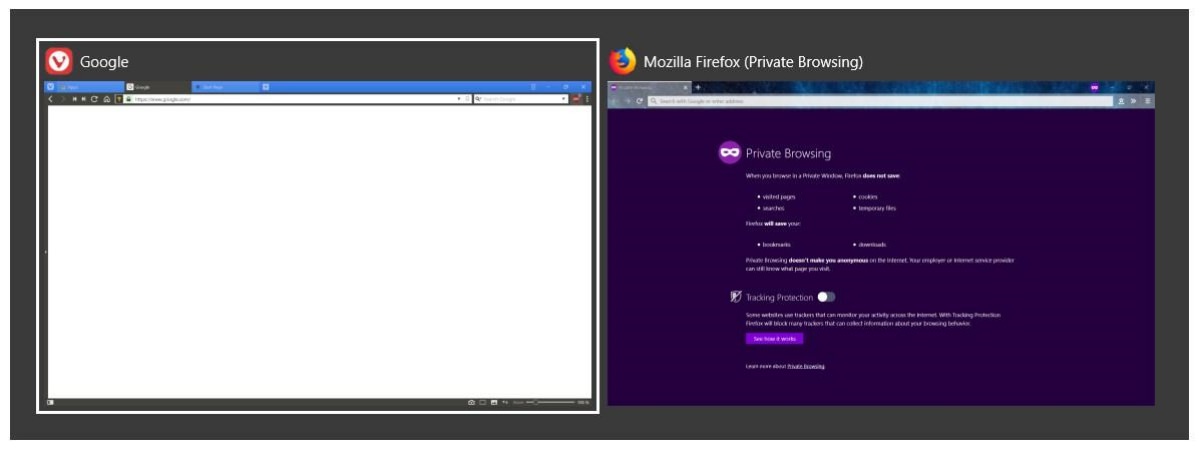
2. Using Shift + Alt + Tab
For switching tasks in reverse, from right to left, press Shift + Alt + Tab. If you overshoot a thumbnail, simply press Shift while still in the switcher to go back.
3. Using Ctrl + Alt + Tab
Ctrl + Alt + Tab opens the task switcher and keeps it open, even if you let go of the keys. You can then pick an app using the arrow keys and select it by pressing Enter.
4. Using Win + Tab
Pressing Win + Tab opens the Task View. From here, you can pick a different task, manage virtual desktops, or check out timeline activities. Select a task or virtual desktop by clicking it with the mouse or using arrow keys and then pressing Enter.
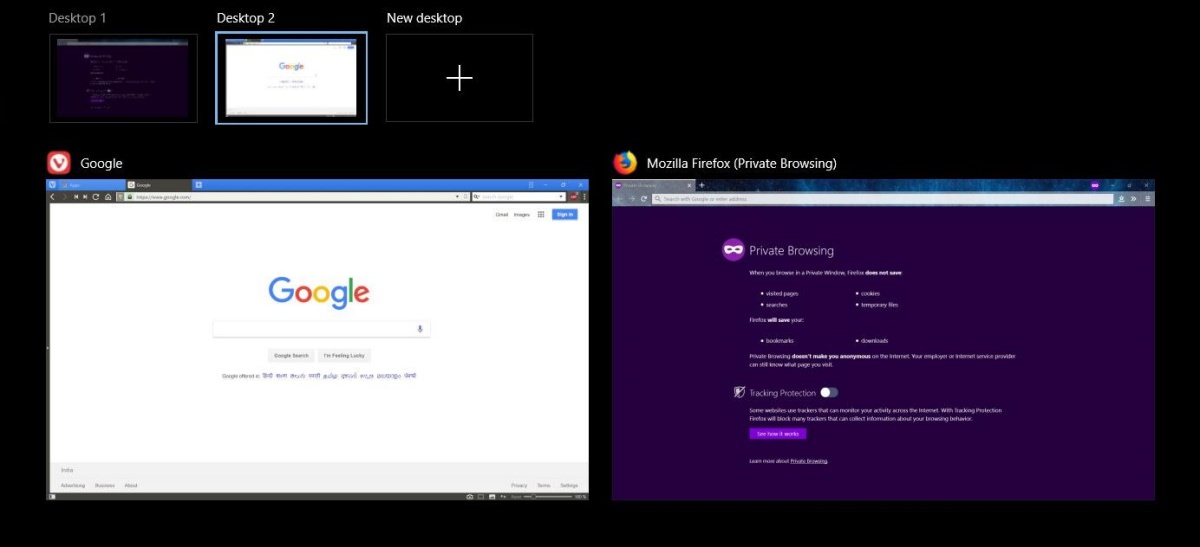
Advanced Keyboard Shortcuts for Task Switching
Once you’re familiar with basic task-switching shortcuts, it’s time to learn some advanced ones for better multitasking.
1. Switch Between Pinned Apps
If you’ve pinned your favorite apps to the taskbar, press Win + numbers 1 through 9 to open or switch to them. If an app is already open, it’ll come to the front.
For instance, if File Explorer is the first app you’ve pinned, pressing Win + 1 will open it if it’s closed, maximize if it’s minimized, and minimize if pressed again.
2. Switch Between Windows of the Same App
The Easy Window Switcher tool lets you switch between windows of the same app using Alt + ` (backtick). This means you don’t have to use Alt + Tab to navigate through multiple windows of a single app. Remember to restart your computer after installing to make it work.
3. Switch Between Apps on a Virtual Desktop
Windows introduced a feature called virtual desktops, great for organizing apps. For example, you can separate work apps from personal ones.
Use Alt + Tab to switch apps on the same virtual desktop. To move an app between virtual desktops without opening Task View, use Win + Ctrl + Left or Win + Ctrl + Right. The first combo moves apps to the left desktop, and the second to the right one.
4. Switch Between Apps Across All Virtual Desktops
By default, Alt + Tab won’t let you switch apps across multiple virtual desktops. However, you can change this. Here’s how to switch between apps on every desktop:
- Open the Start menu, go to Settings, and select System.
- Click Multitasking on the right, and under “Virtual desktops“, select “All desktops” from the dropdown next to “Pressing Alt + Tab shows windows that are open on“.
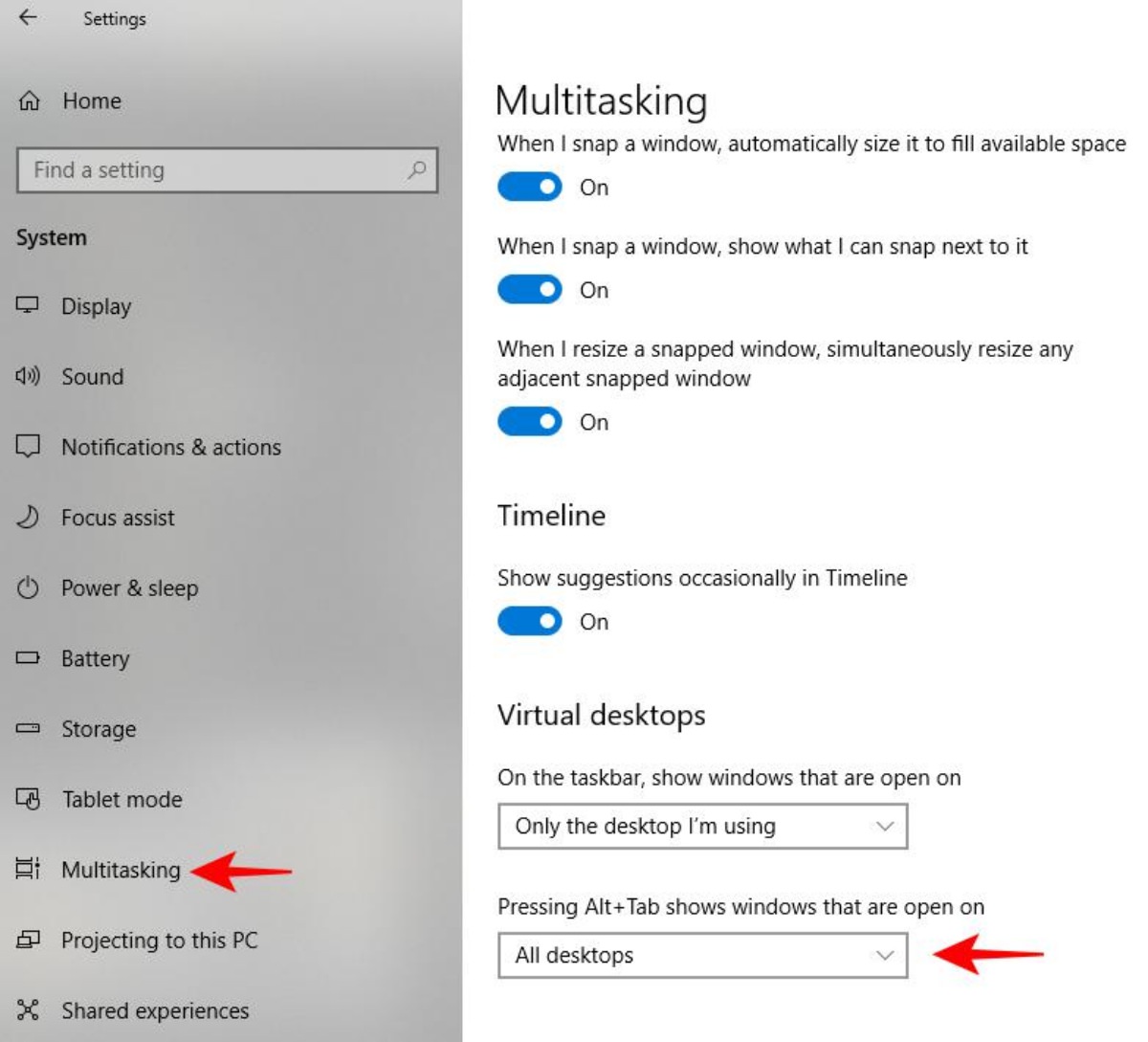
5. Switching Between Apps on Different Monitors
If you use a multi-monitor setup, Windows 10 doesn’t offer a straightforward way to switch apps across screens. However, there are apps that can help you switch between apps more easily on multiple monitors.
6. Using Dual Monitor Tools
Dual Monitor Tools is a great solution for users with more than one screen. Its “Swap Screen” feature lets you move apps between screens, so you can keep certain apps on specific monitors. It also has many other features. Here’s how to adjust its settings in “Swap Screen”:
- Right-click on the Dual Monitor Tools icon in the notification area and select Options.
- Click on “Swap Screen” on the left, then “Active Window“.
- Next to “Move active window to next screen“, click Change, check “Enable this Hotkey“, and set your preferred key combination.
- Do the same for the “Move active window to previous screen” option.
- Click Close to save your settings and exit the options menu.
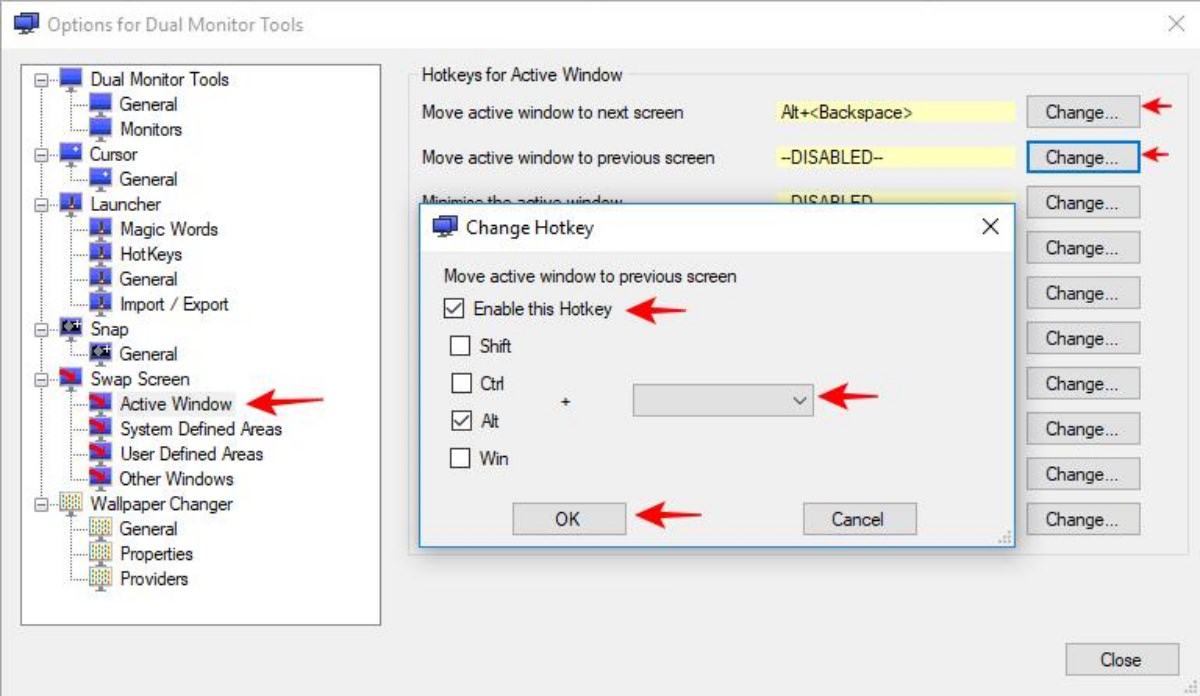
You can now use your set key combinations to move an active app window to the next or previous monitor. Unlike Win + Shift + Left or Right, Dual Monitor Tools keeps the window’s size the same when moving it.
7. Using VistaSwitcher
VistaSwitcher is another task switcher option that displays a list of thumbnails for your running apps. When you press Alt + Tab, it shows a list of all active tasks with their previews. You can scroll through this list by pressing Tab and release it to pick an app. Here’s how to adjust its settings:
- Open VistaSwitcher by pressing Alt + Tab.
- While holding down Alt, right-click on its screen and choose Preferences.
- Go to the Behavior tab and under Position, pick the monitor of your choice for “Show VistaSwitcher on“, then click OK.
8. Switching Apps Across All Monitors
Normally, pressing Alt + Tab displays all apps running on every monitor. But if you want to see only the apps on your current monitor, just press Win + Tab.
Personalize Your Task Switcher
Let’s explore tools to tweak or even replace the standard task switcher for a customized experience.
1. Winaero Tweaker
Winaero Tweaker is a tool that serves both as a customization utility and a task switcher helper. It can change many hidden task switcher settings. Here are a few recommended adjustments:
Get the Classic Task Switcher Back
If you prefer the older task switcher that displayed open windows as icons (instead of the modern thumbnails), you can revert to it using Winaero Tweaker:
- Select “Alt + Tab Appearance” from the Appearance menu.
- In the panel on the right, tick the box next to “Enable classic Alt+Tab dialog“. Note: You’ll need to log out and back in to see the change.

Adjust Background Transparency
Change the transparency of the task switcher’s background to either make it see-through or solid:
- Click on “Alt + Tab Appearance” under the Appearance option.
- Adjust the slider labeled “Alt+Tab background transparency“. Setting it to 0 makes it fully transparent, and 100 makes it solid.
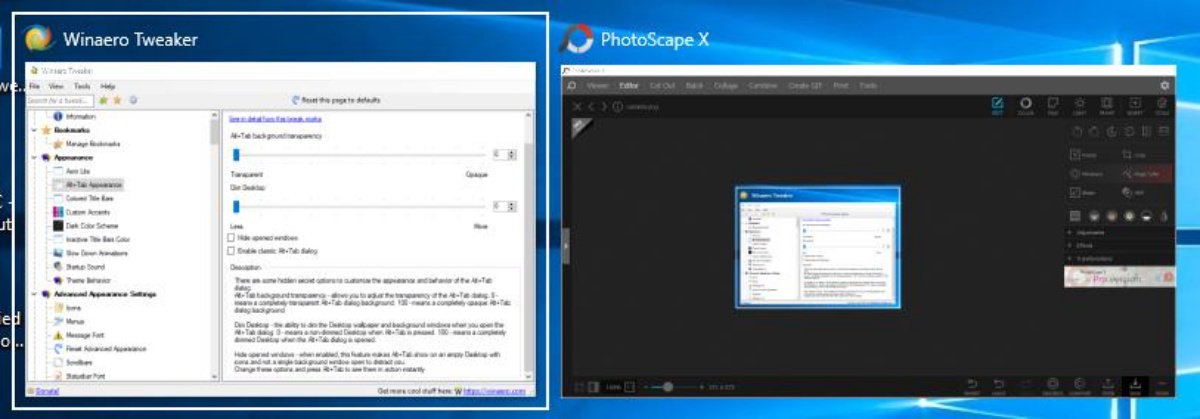
Control Desktop Brightness
You can brighten or darken the desktop background. Set it to 100 to darken completely and 0 to keep it bright:
- From the Appearance menu, select “Alt + Tab Appearance“.
- In the right panel, adjust the slider for “Dim Desktop“. A setting of 0 shows the desktop fully, and 100 makes everything but the switcher dark.
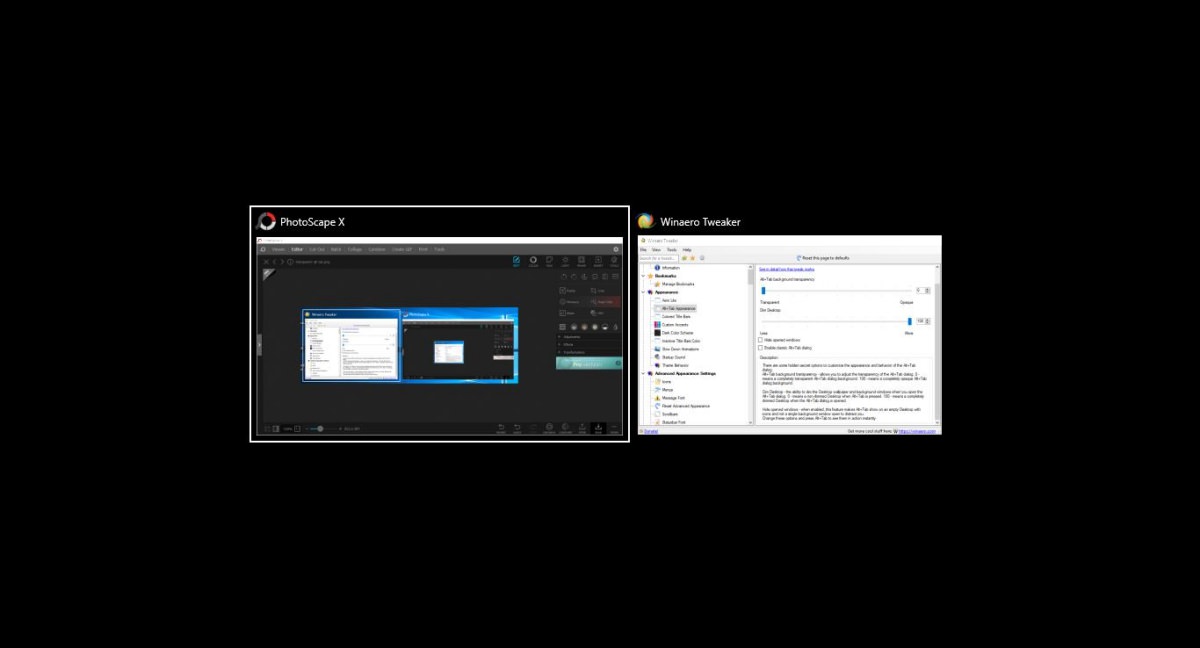
2. Alt-Tab Terminator
Alt-Tab Terminator is a great alternative to the usual task switcher. It offers more features than Windows 10’s built-in switcher and provides previews of windows with the ability to manage tasks. This makes it a top choice for those looking for an upgrade.
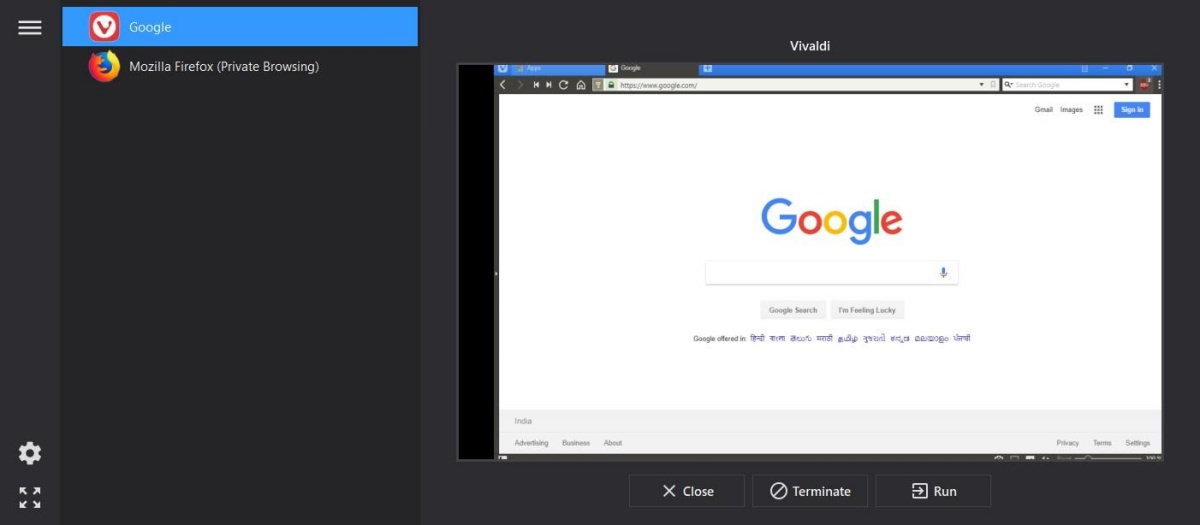
With this tool, you can close, end, or open apps. It even offers an option to close all open windows at once. Below are some of its customization options:
Switch Out the Default Alt + Tab
You can replace the standard task switcher with Alt-Tab Terminator. To do this, click on its bar-icon and select “Replace Alt-Tab”.

Replace the Win + Tab Function
You can also use Alt-Tab Terminator to replace the Task View (activated by pressing Win + Tab). To set this, click on the bar-icon and pick the “Replace Win-Tab” option.
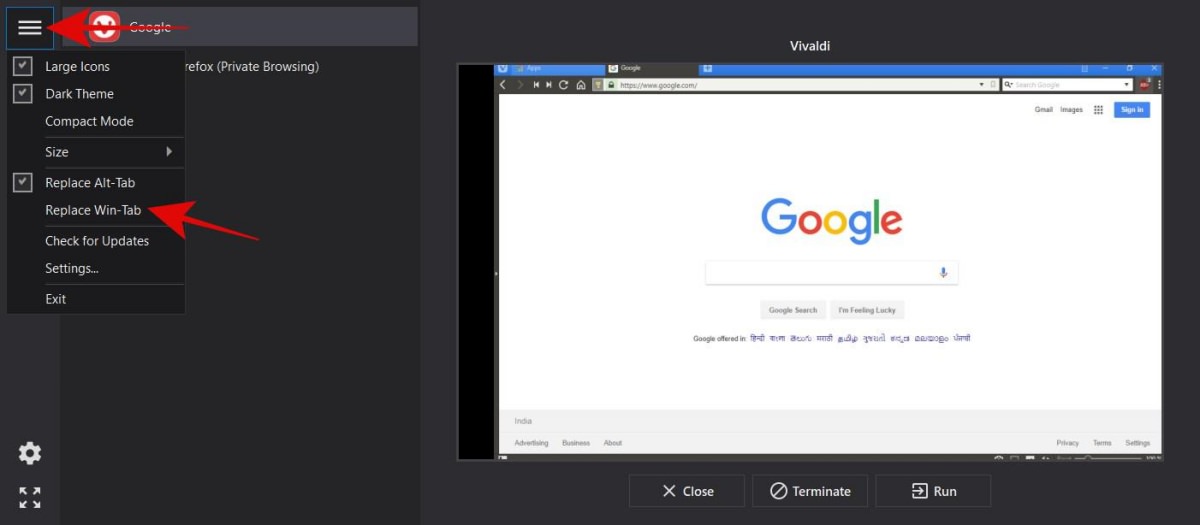
This is a great choice if you like Alt-Tab Terminator but don’t want to get rid of the standard task switcher. However, remember that the Task View activated by Win + Tab offers unique features (like virtual desktops) that Alt-Tab Terminator doesn’t have.
Maximize to Full Screen
Pressing F11 or the full-screen button in the bottom-left corner will make the switcher window take up the whole screen, showing everything in a larger view.

Create Your Own Shortcuts
Alt-Tab Terminator lets you set your own keyboard shortcuts for various actions. Click on its bar icon, select Settings, and in the window that opens, define your desired shortcuts under the “Hotkeys” section.
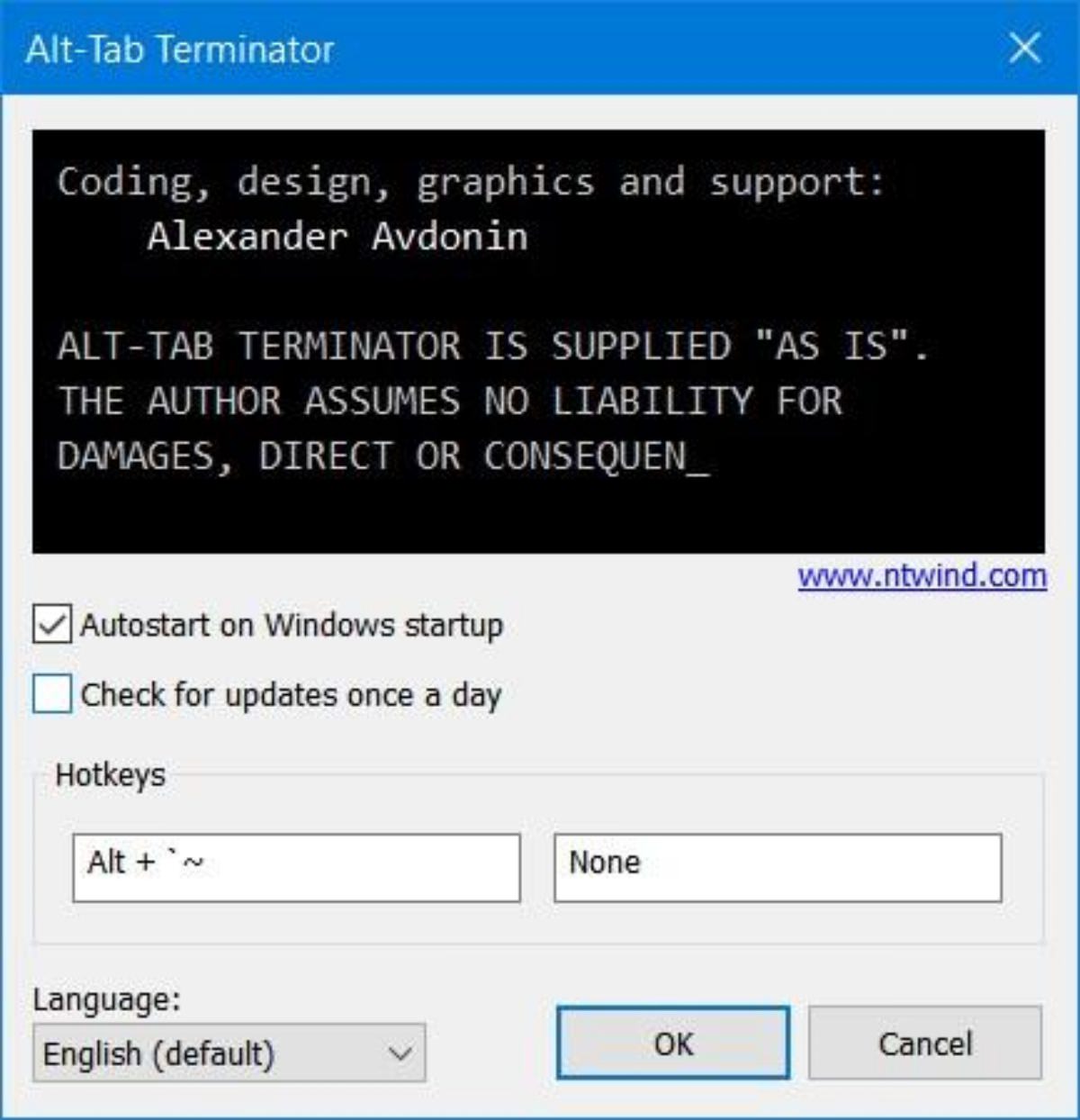
For instance, you can use Alt + ~ to open Alt-Tab Terminator. This allows you to continue using both the standard task switcher and Task View without missing out on the features of Alt-Tab Terminator.